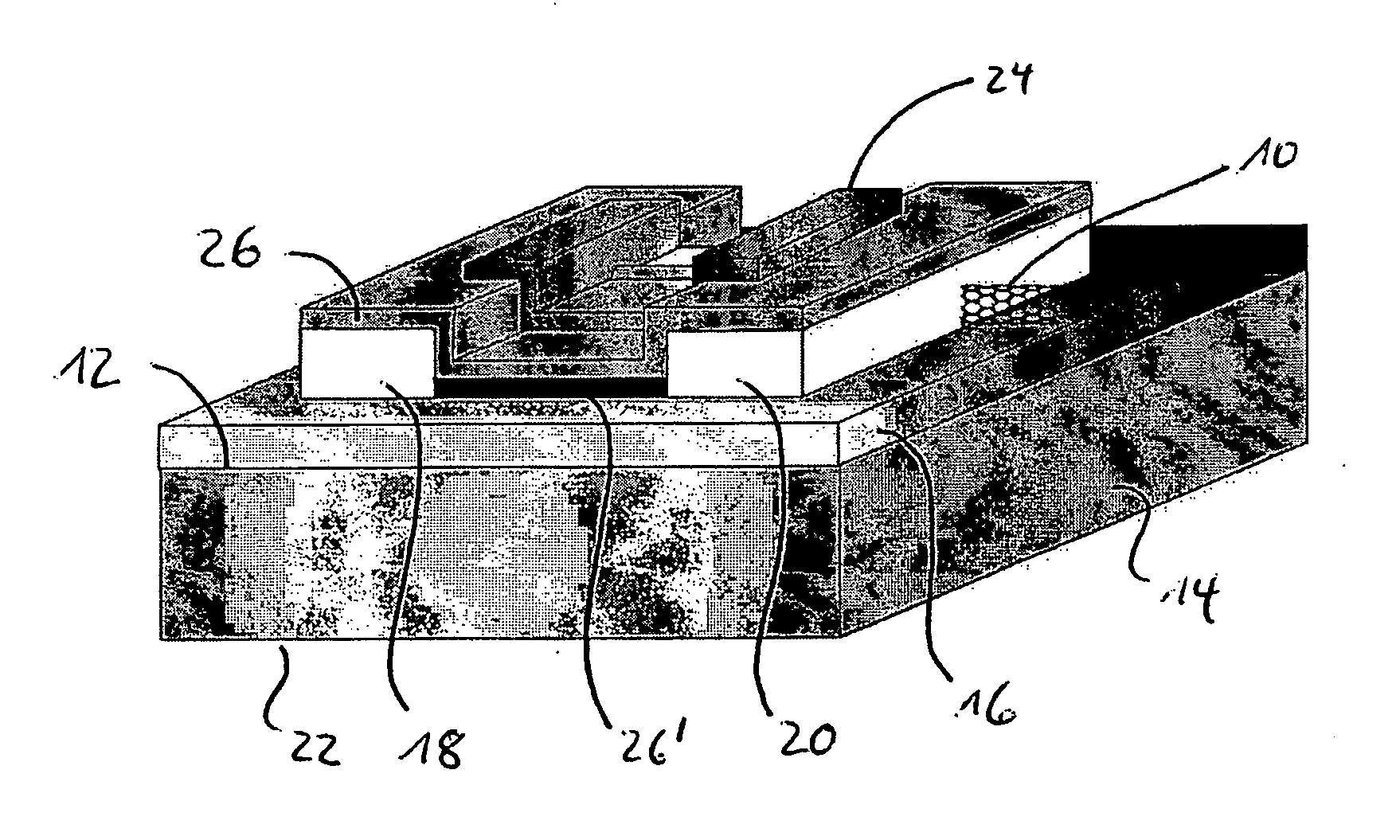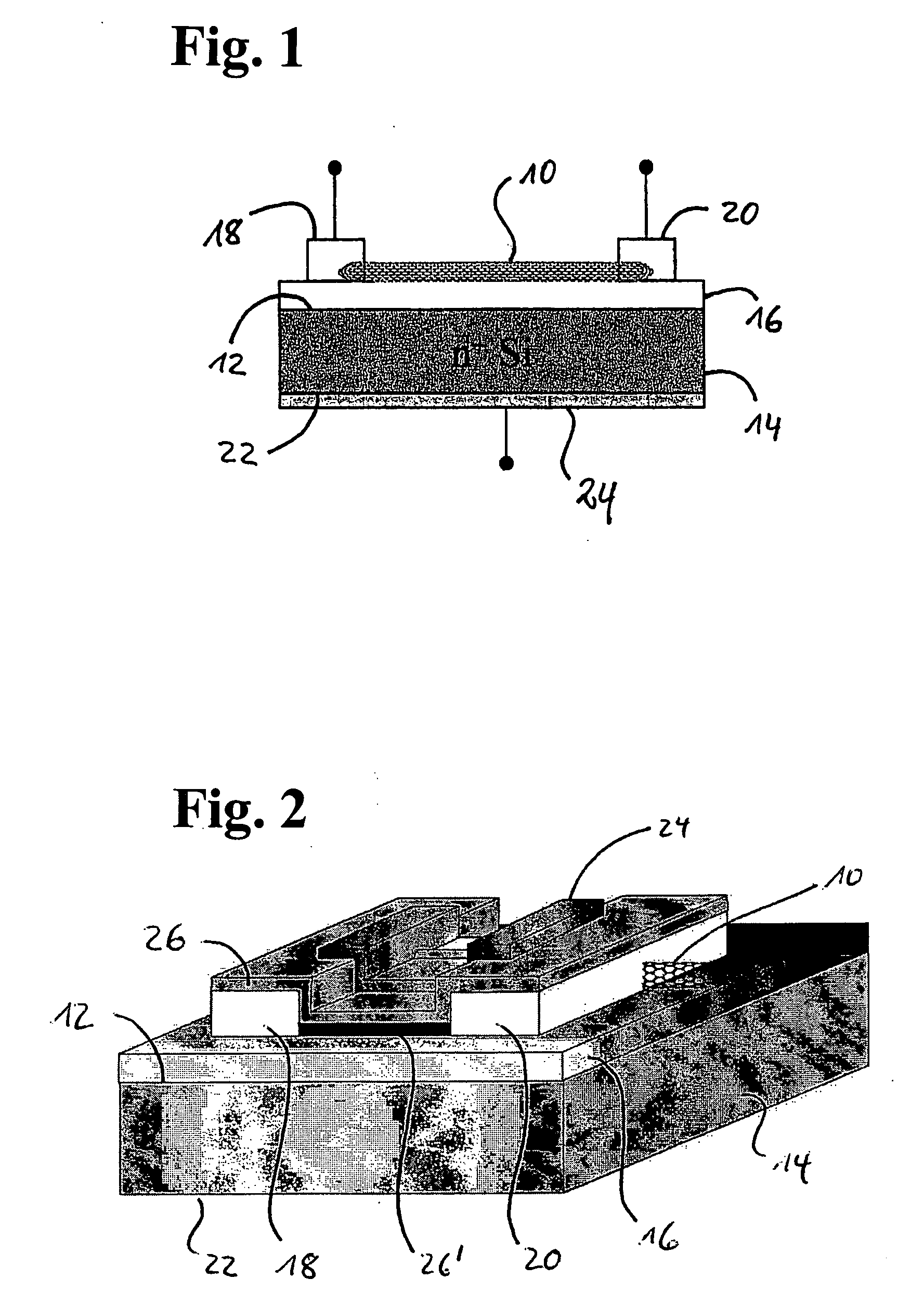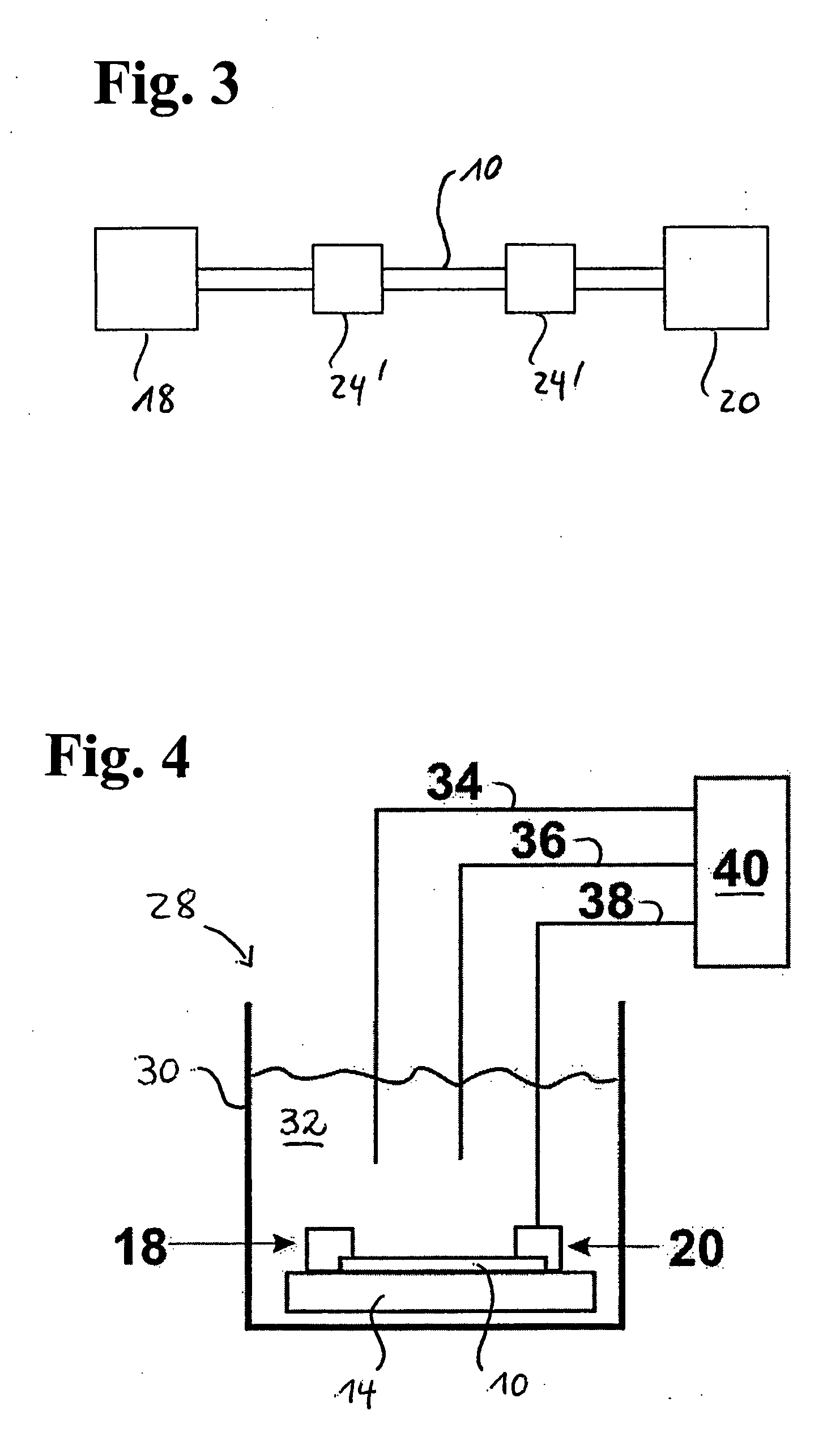Method of fabricating carbon nanotube field-effect transistors through controlled electrochemical modification
a field-effect transistor and carbon nanotube technology, applied in nanotechnology, nanoinformatics, electric instruments, etc., can solve the problems of affecting adjacent semiconducting tubes in a negative way, unable to achieve 100% separation of metallic nanotubes from semiconducting ones, etc., to achieve the effect of improving the performance of existing fets, reducing current carrying capacity, and improving the performance of existing
- Summary
- Abstract
- Description
- Claims
- Application Information
AI Technical Summary
Benefits of technology
Problems solved by technology
Method used
Image
Examples
Embodiment Construction
[0038] A single-wall carbon nanotube field-effect transistor (SWCNT-FET) as shown in FIG. 1 is fabricated by dispersing single-wall carbon nanotubes (SWCNTs) 10, for instance produced by the HiPCO process (high pressure pyrolysis of carbon monoxide) as performed by Tubes@Rice, Lexington, in a surfactant solution and depositing these on a substantially flat front surface 12 of an N+-doped silicon substrate 14 which is covered by a 200 nm thick layer 16 of thermally grown silicon oxide.
[0039] If the surfactant solution containing the SWCNTs 10 is poured on a substrate 14 having a flat surface 12 the nanotubes 10 typically arrange themselves with random orientation. In contrast, a predetermined orientation of the SWCNTs can be achieved by, for instance, providing the substrate with a periodic structure comprising peaks and valleys preferably extending in parallel to each other. When the surfactant solution containing the SWCNTs is distributed across a so patterned surface the SWCNTs w...
PUM
| Property | Measurement | Unit |
|---|---|---|
| thickness | aaaaa | aaaaa |
| thickness | aaaaa | aaaaa |
| thickness | aaaaa | aaaaa |
Abstract
Description
Claims
Application Information
 Login to View More
Login to View More - R&D
- Intellectual Property
- Life Sciences
- Materials
- Tech Scout
- Unparalleled Data Quality
- Higher Quality Content
- 60% Fewer Hallucinations
Browse by: Latest US Patents, China's latest patents, Technical Efficacy Thesaurus, Application Domain, Technology Topic, Popular Technical Reports.
© 2025 PatSnap. All rights reserved.Legal|Privacy policy|Modern Slavery Act Transparency Statement|Sitemap|About US| Contact US: help@patsnap.com



